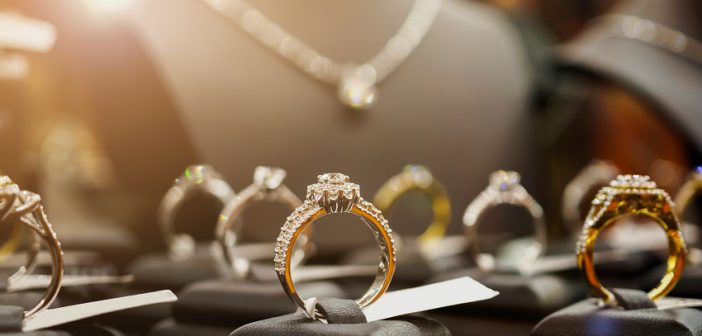If you thought getting down on one knee to propose marriage was nerve-racking, wait until you glimpse the gorgeous array of diamond rings displayed online like stars across the heavens. She’ll love whatever you pick, so take a breath. You’ve got this!
How much do engagement rings cost?
According to some websites, the average price of diamond rings at the end of 2021 was $6,000 – but don’t panic. That’s an average. Around 1/3 of the people surveyed for this article spent between $1,000 to $4,000. Around 8% spent under $1,000. Why is the range so huge? Geographic location. You’re better off in cyberspace.
Lab grown diamonds
Who said only mined diamonds prove true love? Not only are lab grown diamond rings less expensive and non-controversial, but shoppers get more bang for their buck by choosing a lab grown gem. Shop from websites to see what we mean. You’ll spend around 40% less than for a half-carat natural stone of the same size and quality, and up to 70% less for a full carat.
What variables impact engagement ring prices?
Carat: The heavier the stone, the more expensive it is.
Clarity: The clearer the stone the higher the price. Even tiny flaws impact the cost.
Cut: You’ll spend more on gems requiring extra cutting and shaping. Princess cuts are most affordable; pear, heart-shaped, and oval stones cost more.
Design: Choose a ring marketed under the name of a celeb or notable designer and pay for this brand name.
Quality: Can you put a price on quality? You can if you care about accents, metal, and craftsmanship.
What you will pay — per carat — for your ring
Using brilliant round diamonds as the basis for comparison, use these ballpark figures to estimate cost:
- 0.50 carat ($610 to $2,900)
- 1.0 carat ($2,500 to $18,000)
- 1.5 carat $4,400 to $32,000)
- 2.0 carat ($8,400 to $58,000)
Diamond color and matching metals
Colorless jewels are the first choice of couples despite the price. Laboratory colored stones cost less, while original color gems are too rare to estimate price. Do certain metals complement colored stones? According to the Gemological Institute of America, these are matches made in heaven:
-Match yellow or brown diamonds with white gold, platinum, yellow gold, or rose gold.
-Pink diamonds shine amid white gold and platinum settings.
-Pair blue stones with platinum, white gold, or silver
Trilogies and ratios of center stones to side diamonds
Hot, trendy, and oh, so versatile, trilogies (3 stones share the engagement ring) need not make you wish you had paid more attention in math class if you abide by this simple tutorial. It’s okay if all 3 stones are the same carat weight. It’s okay if the center stone steals the show. If you chose the second option, the best-looking combination remains two side stones that are approximately 1/3 the size of the big boy and you can take that calculation to the bank.





It actually depends on your taste. Personally, I really like various different jewelry pieces, but with some sense and healing properties. I checked https://ayanacrystals.com/product-category/healing-jewelry/ where are a lot of various different crystals, that are looking magnificent and having various different properties that you can open while wearing it.
Hey! Do you want to buy jewelry for yourself or as a gift for someone? There are few great online stores I know, but I’ve already used only one – it’s https://www.itshot.com/jewelry/mens-rings/diamond . I bought there a few rings for me and 2 or 3 jewelry sets for my friends as a Christmas present. Also, there is a gift section, where you can find something unique to surprise someone. What I like the most about that store is high quality and fast shipping to almost every part of the world.
This is one of the main question and myth – is lab-grown diamonds like a “real” diamonds? Lab-grown diamonds are pure crystallized carbon just like a mined diamond. Equal in every way except, of course, origin.
Thierry Silber, founder of Madestones, Europe’s market leader in laboratory-grown diamonds, has a helpful analogy. “You can compare it to ice that occurs in nature when the temperature drops below zero, and ice that occurs in our freezer at home. The ice is the same, only the place of origin is different.”